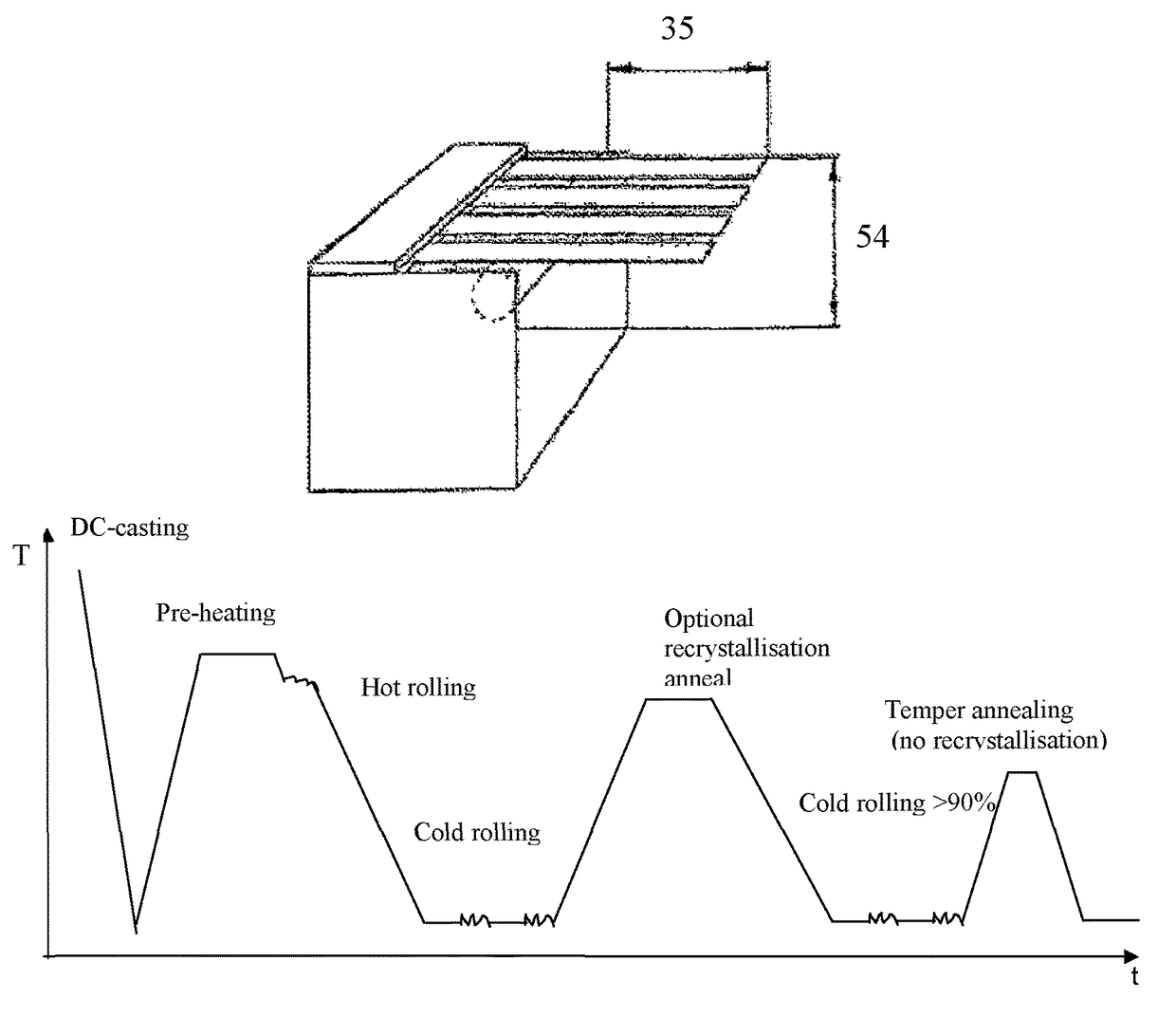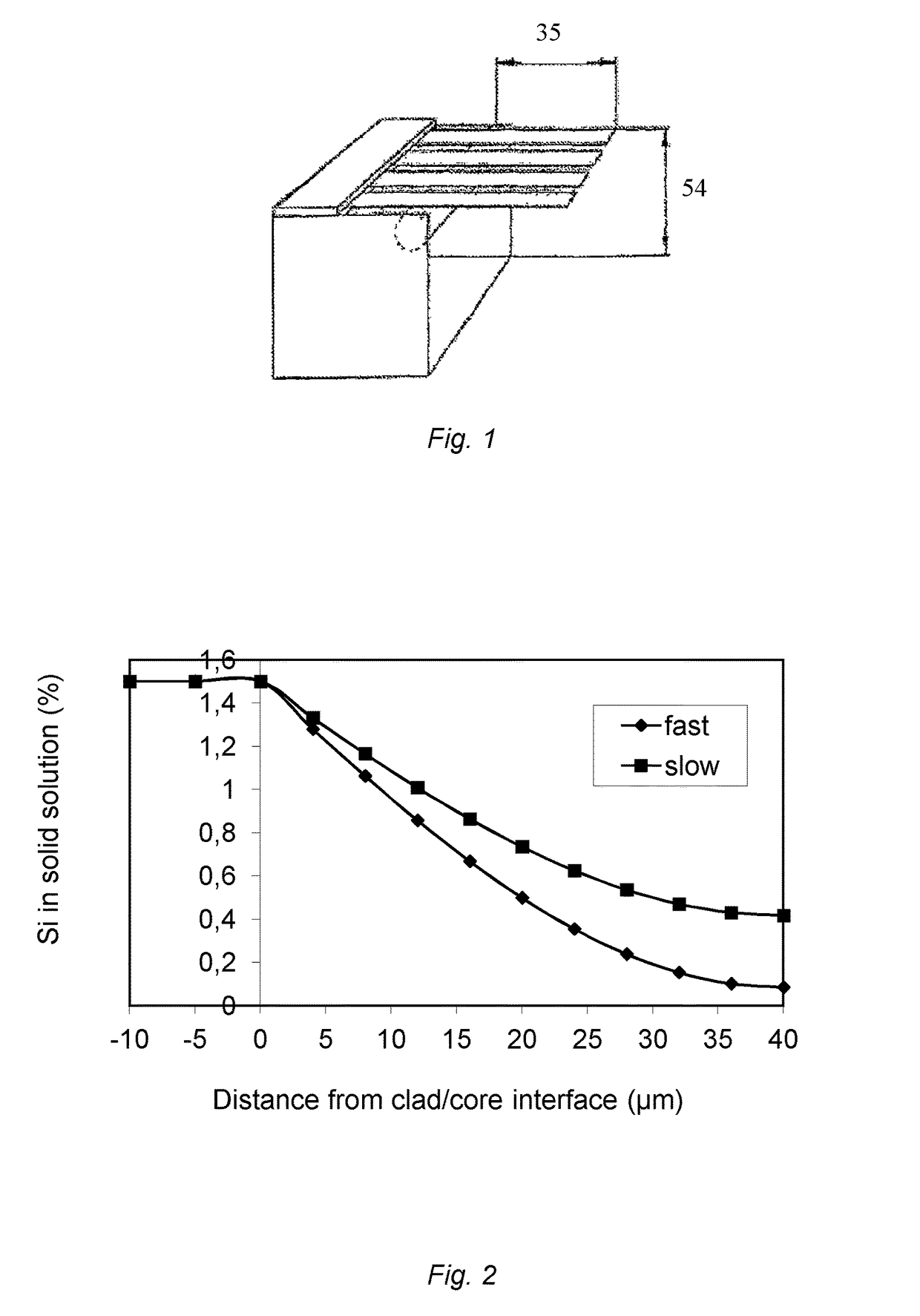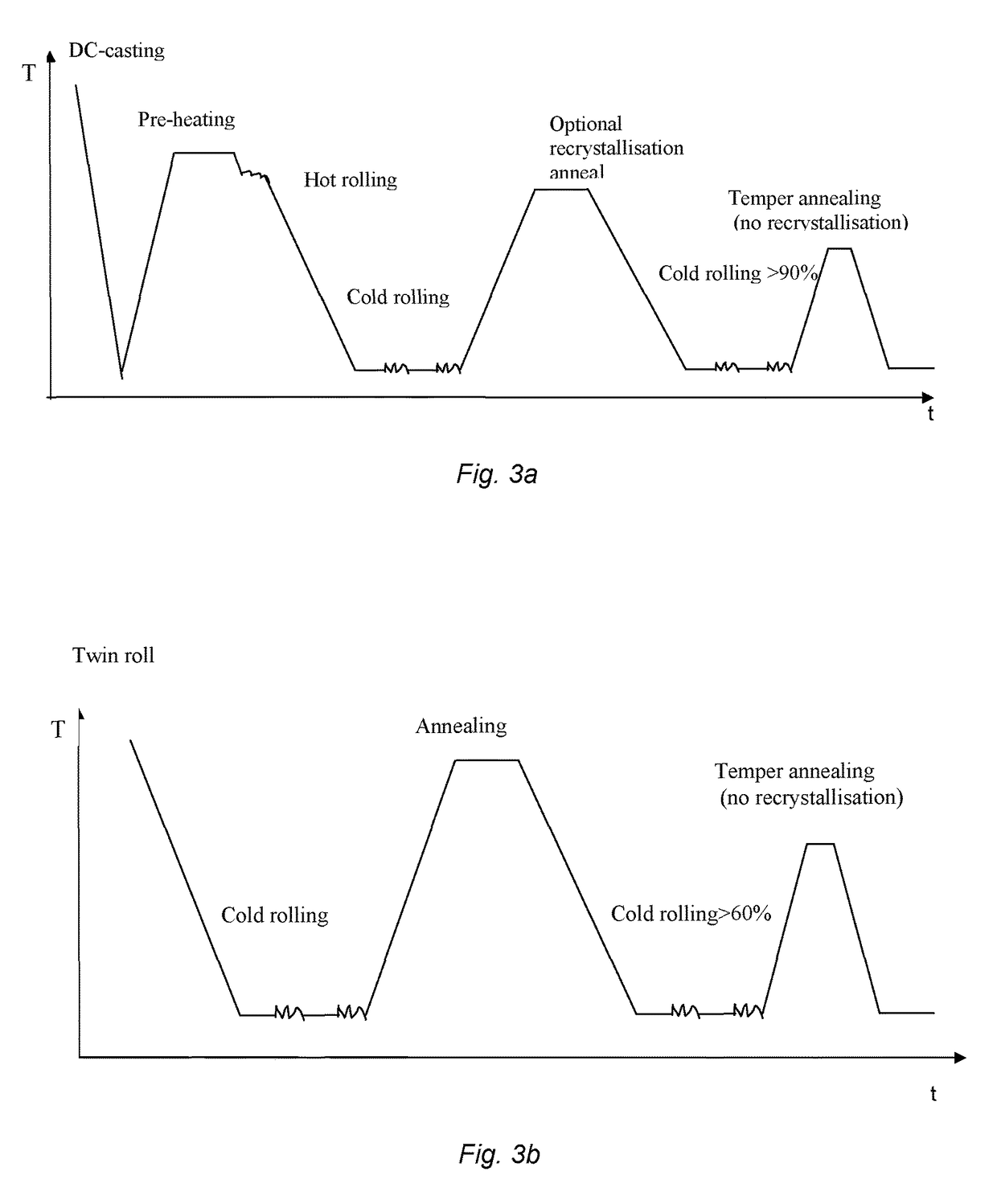Ultra sagging and melting resistant fin material with very high strength
a technology applied in the field of ultra-sagging and melting resistance fin materials, can solve the problems of insufficient properties of aluminium strips for certain applications, and achieve the effects of high sagging resistance, excellent brazing performance, and high strength
- Summary
- Abstract
- Description
- Claims
- Application Information
AI Technical Summary
Benefits of technology
Problems solved by technology
Method used
Image
Examples
example 1
[0049]Braze simulations using different brazing cycles were performed on the above materials.
[0050]Samples were formed as fins and brazed on unclad AA3003 plates after fluxing. Two different brazing cycles were tested in order to simulate different speeds in brazing cycles as shown in Table 2 and FIG. 4. The dark curve shows the fast cycle and the light curve the slow cycle corresponding to a typical condenser brazing cycle. The brazed samples were cross sectioned and studied. The quality of the joints was graded and the amount of filler penetrating the core was evaluated (see Table 3). The amount of filler metal penetrations found were graded as: Many or Few.[0051]In cycle Slow the 50LSi material had fewer areas with filler metal core penetration than the 50MSi material.[0052]In the 70LSi and 70MSi materials very few areas were found with filler metal inside the fin cores.[0053]In the 70MSi material many areas with filler metal core penetration was fond.
[0054]Filler metal penetrati...
example 2
[0057]The sagging resistance of samples braze simulated according to Slow braze cycle was measured according to the following method: The material is mounted in a special rig as shown in FIG. 1. Samples 15 mm wide were cut across the rolling direction and at least 90 mm along the rolling direction. Four samples were mounted in the rig. The cantilever beam length was 35 mm, and the free end of the cantilever was 54 mm above the surface of the measuring table.
[0058]The rigs were placed in the oven and the temperature was raised according to braze cycle Slow. The samples were removed immediately after the last soak at 600° C.
[0059]The sagging resistance of the material with 0.16% Si showed to be much better than the sagging resistance of the reference sample containing 0.5% Si, table 4.
[0060]
TABLE 4Sagging, beam length 35 mmThicknessSagging(μm)(mm)50LSi49650MSi5127
example 3
[0061]Tensile testing was performed in delivery condition and after braze simulation using brazing cycle Fast see Table 5. The result shows that the highest strength for a given thickness in the delivery condition is obtained for the samples with a low Si content.
[0062]
TABLE 5Result from tensile testing on samples taken from the middle of the strip before andafter braze simulationDelivery conditionAfter braze simulationGaugeRp0.2RmA50 mmGaugeRp0.2RmA50 mmSample(mm)(MPa)(MPa)(%)(mm)(MPa)(MPa)(%)50LSi0.05115817360.04872158450MSi0.05114416880.04873157470LSi0.07017419090.06766161670MSi0.06916218370.06673175570HSi0.0691801921.30.067541559
PUM
| Property | Measurement | Unit |
|---|---|---|
| temperature | aaaaa | aaaaa |
| diameter | aaaaa | aaaaa |
| thickness | aaaaa | aaaaa |
Abstract
Description
Claims
Application Information
 Login to View More
Login to View More - R&D
- Intellectual Property
- Life Sciences
- Materials
- Tech Scout
- Unparalleled Data Quality
- Higher Quality Content
- 60% Fewer Hallucinations
Browse by: Latest US Patents, China's latest patents, Technical Efficacy Thesaurus, Application Domain, Technology Topic, Popular Technical Reports.
© 2025 PatSnap. All rights reserved.Legal|Privacy policy|Modern Slavery Act Transparency Statement|Sitemap|About US| Contact US: help@patsnap.com



